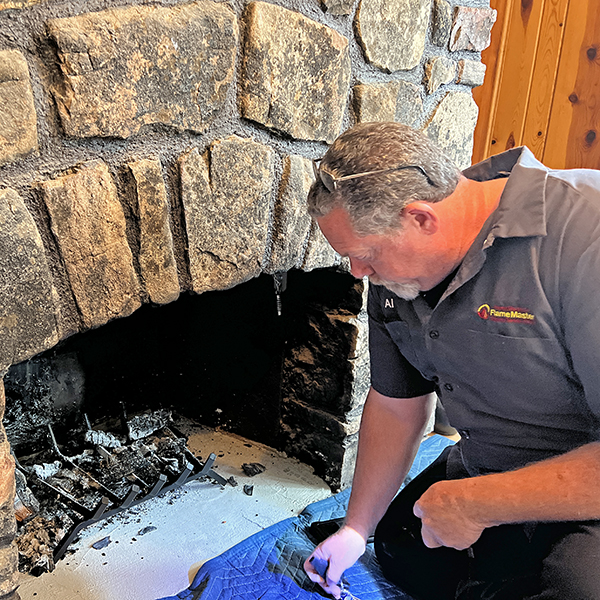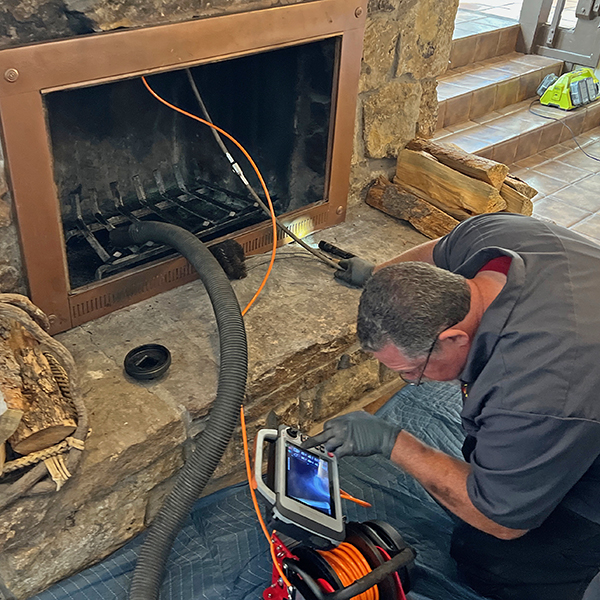If you own a wood-burning fireplace, you probably know a little about creosote. But you may not know all that you need to know to keep your chimney, home and family safe. FlameMaster Chimney Sweep of Crystola, CO, would like to share some important information about creosote and maybe debunk a few myths along the way.
 What is creosote?
What is creosote?Creosote is a byproduct of smoke condensation in your chimney’s flue. If you send smoke into the chimney, you can’t avoid making some creosote, although you do have quite a bit of control over how much smoke is made. Creosote exists in three stages, as recognized by those who work in the chimney industry:
Stage 1: Creosote is flaky and fairly easy to remove with the right tools.
Stage 2: In this stage, creosote deposits are tar-like and not as easy to remove.
Stage 3: Hardened, stage 3 creosote is very difficult to remove.
When allowed to keep building up, creosote can cause two serious problems:
Most chimney fires each year start with ignited creosote. These fires can be quick and “minor,” or they can be catastrophic and end up consuming part or all of the home.
Creosote is highly acidic and is known to cause decay to chimney liners, which are designed to keep dangerous gases and heat from spreading.
Professional chimney sweeps have specialized brushes, rods, scrubbers, solvents and vacuums to safely remove creosote from chimneys. The Chimney Safety Institute of America (CSIA) recommends annual chimney sweeping to minimize creosote buildup.
Chimney sweeping logs are popular these days, but they’re not a complete solution. When used correctly, these logs can dislodge some stage 1 creosote. They’re of little value with larger, more stubborn buildups. The CSIA considers chimney sweeping logs a “supplemental” method for dealing with creosote, not a replacement for proper chimney cleaning.
While you can’t prevent smoke when burning wood, you can create less smoke by following these three guidelines.
1. Burn only dry, seasoned firewood: The moisture in damp wood creates a lot of smoke.
2. Burn only firewood: Never burn clothing, painted wood, magazines, household garbage or anything other than actual wood logs.
3. Ensure a proper draft: Restricted air flow within a stack of burning logs will cause them to burn sluggishly and create excess smoke. Make sure your fireplace is drafting efficiently by:
Annual chimney inspections should be performed for all active fireplaces, regardless of what kind of fuel they burn. Trained chimney inspectors will be able to tell when creosote has reached a dangerous level, and they’ll also be able to spot early signs of damage throughout the system. Many chimney sweeps (chimney cleaning technicians) also provide inspections and repairs.
 The help your chimney needs
The help your chimney needsWhen it’s time for expert chimney service, FlameMaster is ready to get to work. We know what it takes to keep your chimney clean, safe and efficient. Reach us by calling (719) 661-3277 or using our handy contact form.
We proudly serve the greater Colorado Springs region, including Crystola, CO, Woodland Park, CO, Divide, CO, Manitou Springs, CO, Cripple Creek, CO, Victor, CO, and other local communities.